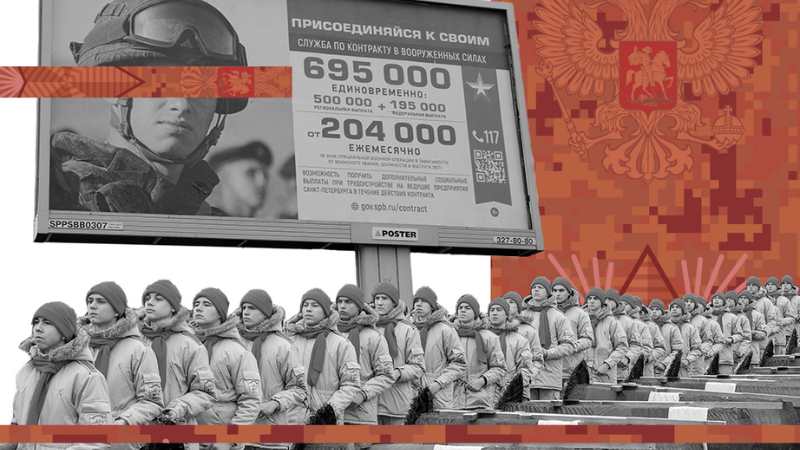
Russia’s Year of Truth: The Soldier Shortage
By Pavel Luzin, Visiting Scholar at the Fletcher Russia and Eurasia Program
In the first of three pieces, Pavel Luzin looks behind the curtain of Kremlin misinformation to expose the crisis in Vladimir Putin’s military.
The death and disablement of hundreds of thousands of Russian soldiers, acute strains in the defense budget and a looming shortage of military hardware make 2025 the year of truth for Moscow’s armed forces.
With the full-scale war against Ukraine nearly three years-old, Russia’s armed forces have lost as many as 700,000 troops killed, injured or missing in action by October last year. Estimates by Russian and BBC researchers suggest at least 400,000 are dead or too seriously wounded to return to duty.
Recruitment has barely covered these losses, forcing Russia to use draftees to counter Ukraine’s Kursk offensive in August 2024, import troops from North Korea, and extend the use of convicts and people under criminal investigation.
By resorting to such desperate measures, Moscow was able to maintain combat pressure and slowly extend its occupation of Ukrainian territory, though its slow progress would not be considered a success when judged against Russian military theory.
In 2025, recruitment will continue to be a significant challenge for the Kremlin, further degrading its ability to field a modern army.
In December 2023, President Vladimir Putin claimed 490,000 contracted soldiers had been recruited to the armed forces during the previous 12 months. A year later, he admitted the actual number for 2023 was much lower, saying in a speech that “more than 300,000”had signed up.
This number correlates with the annual budgetary report, which detailed approximately 330,000 one-time payments (of 195,000 rubles, or $1,900, each) to contracted soldiers. This also confirms an assessment of troop sign-up published by CEPA in March 2024.
Putin announced the official number for 2024 in the same speech, claiming 430,000 contracted soldiers had been recruited during the year. He appears to have been exaggerating again.
Currently there is only a budgetary report for three quarters of 2024 and it suggests fewer than 230,000 were signed up between January and September. It is very unlikely that a further 200,000 signed up between October and December to tally with the president’s boast.
A more probable assessment, which will need to be verified later in the year, is that 60,000–70,000 joined in the last quarter, taking total recruitment in 2024 to about 300,000 and so matching the previous year’s number. This figure would include prisoners and people under investigation, who are eligible to join the military in exchange for criminal charges being dropped.
Alongside a shortage of recruits, the Kremlin also faces the manpower challenge caused by combat losses.
(This post is republished from CEPA.)
